Vernissage: Dienstag, 03. Oktober 2006 um 19 Uhr
Howard W. French
Disappearing Shanghai
Dauer der Ausstellung 03.10. - 08.10.2006
Howard W. French
Disappearing Shanghai
Dauer der Ausstellung 03.10. - 08.10.2006
Howard W. French, Chef des Schanghaier Büros der New York Times, für den Pulitzer Preis vorgeschlagen, fotografiert den Niedergang des alten Schanghai.
Howard W. French besucht Berlin auf Einladung des Goethe Instituts nach seine Nominierung für den Lettre Ulysses Award in Jahr 2004.
Howard W. French nutzt die Gelegenheit seines Berlin-Aufenthaltes für eine Ausstellung seiner beindruckend mitfühlenden Fotografien. Sie zeigen die alten Stadtviertel Shanghais, die den modernen Zukunftsvisionen einer fieberhaft wachsenden Megapolis im Wege stehen und unweigerlich vergehen werden. Seine Fotografien entstehen bei Spaziergängen in der Nachbarschaft. Sie werden kunstvoll in bester Sechs mal Sechs - Negativqualität eingefangen, mit einem Blick für einfache Leute und ein architektonisches Umfeld, das menschliche Maße hatte.
Die Bilder sind ein Dokument des halböffentlichen, halbprivaten Lebens der kleinen Straßenhändler, Kartenspieler, der improvisierten Garküchen. Auf Campingstühlen Ruhende nehmen die sommerlichen Straße wie einen südlichen Strand in Besitz und lassen das Leben an sich vorbeiziehen. Die soziale Umgebung, in der die Menschen noch ein Schwätzchen halten über die täglichen Siege und Niederlagen, ist ein „Kiez“ mit dem Charme alter Zeiten, der zum Untergang verurteilt ist. In der besten Tradition eines August Sander werden hier nie wiederkehrende Momente einer Stadt eingefangen. Deshalb hat diese außergewöhnliche Fotodokumentation gewöhnlichen Lebens in Schanghai, das für immer verloren gehen wird, eine bedeutende historische Dimension.
Howard W. French ist ein „sehender“ Schriftsteller, der uns teilhaben läßt an einer Sicht, das Große im Kleinen zu erkennen, bevor es verschwindet.
www.howardwfrench.com
Howard W French
Shanghai is a great metropolis – a city with spectacular bridges, and high-speed trains, and more skyscrapers, all built in less than a generation, than New York City.
Less well appreciated, sometimes least of all by its own residents, is another kind of greatness, splendor that dates from long before the current boom.
There is a strong case to be made for Shanghai being Asia's first great modern metropolis. The seeds of the greatness and the modernity alike lie in the marriage of East and West, of capital and labor, as Westerners began flocking here in the late 19th century with dreams of huge fortunes kicking off a wave of intense globalization a century before the term was ever conceived.
The marriage that produced the Shanghai that we know today was not always a pretty one. Under foreign rule, racism and crass exploitation were integral to daily life.
Mixed marriages have a way of producing beautiful children, though, and Shanghai was no exception. It's most remarkable offspring was a Shanghai way of life, freer and more open to influences from elsewhere than any other place in China.
This new Shanghai drew migrants from all over the country to the city's textile mills, docks and other industries to work in the cash economy.
The neighborhoods where they lived were built densely but to a human scale: walkup apartment blocks that stood four or five stories tall, with long internal courtyards that provided air, along with a semi-private space to relax over cards or mah jong, to cook or to hang one's laundry.
Even today, with their weathered manila facades, the buildings retain a shabby, affecting charm. For me, what is most attractive about these neighborhoods, now disappearing with such a speed that soon only small vestiges will remain, though, is the extraordinary sense of intimacy that prevails within them.
The people who live in them know each other by name and take the time to stop and to talk about life's pains and triumphs, about the passing of seasons and of generations.
The elderly and the young are looked after in common. Meals are taken in open air together, where the sweet aromas of 100 kitchens mingle. Food is bought and sold in impromptu sidewalk markets.
Birds are raised lovingly in their cages and let out to fill the afternoon sky with their wings. In the summer months, the sound of pet crickets resonates through the warm air. Everywhere, everywhere there are bicycles, the transport of the common man.
All is not perfect here, to be sure. But walk these streets with me, if only through these images, and you will sense something truly wonderful. Soon it will be gone.
More reading (Herald Tribune) >>>
Howard W. French is a senior writer for the New York Times. After teaching at the University of Ivory Coast in the early 1980s, he began his journalism career writing about Africa for the Washington Post, Africa News, The Economist and numerous other publications. Since 1986, he has reported for the Times from Central America, the Caribbean, West and Central Africa, Japan, Korea and now China. In 1997, his coverage of the fall of Mobuto Sese Seko won the Overseas Press Club of America’s award for best newspaper interpretation of foreign affairs. French was born in Washington, D.C., and now lives in Shanghai.
Mr. French is visiting Berlin at the invitation of the Goethe Institut, following his book's nomination in Berlin in 2004 for the Lettre Ulysees Award.
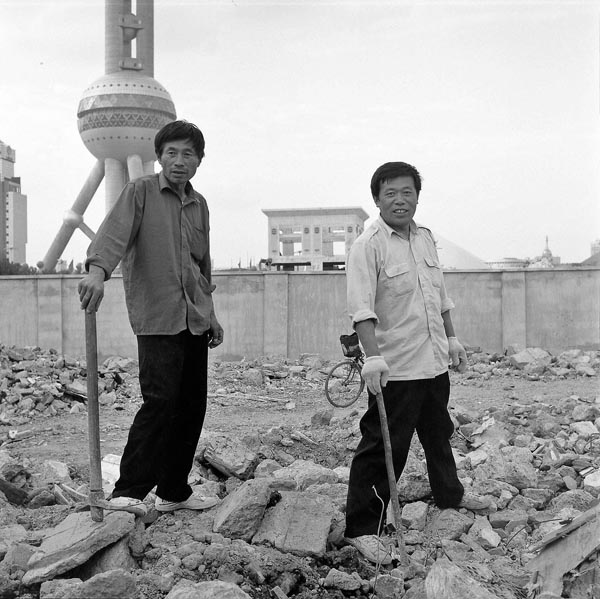
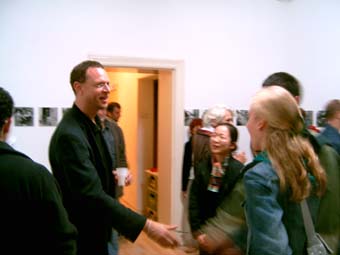 |
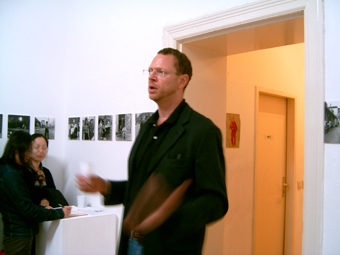 |
|
Howard W. French
|
Howard W. French
|
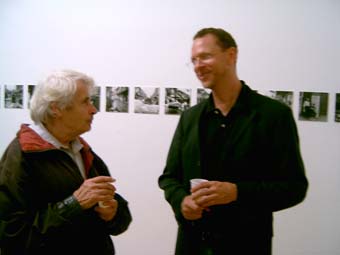 |
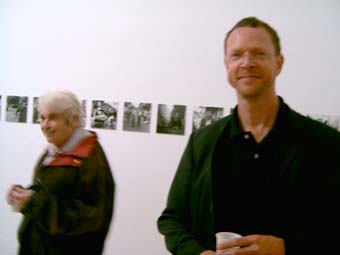 |
|
Howard W. French and Herr Müller
|
Howard W. French and Herr Müller
|
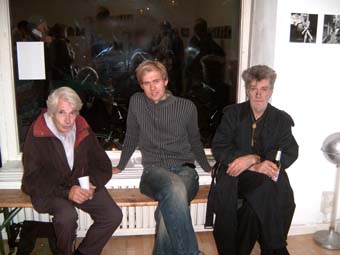 |
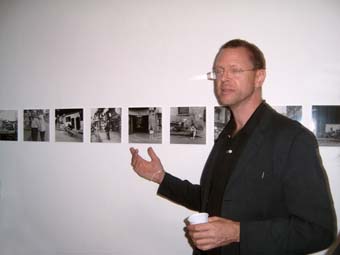 |
|
Herr Müller, Timm Kölln and Horse
|
Howard W. French
|
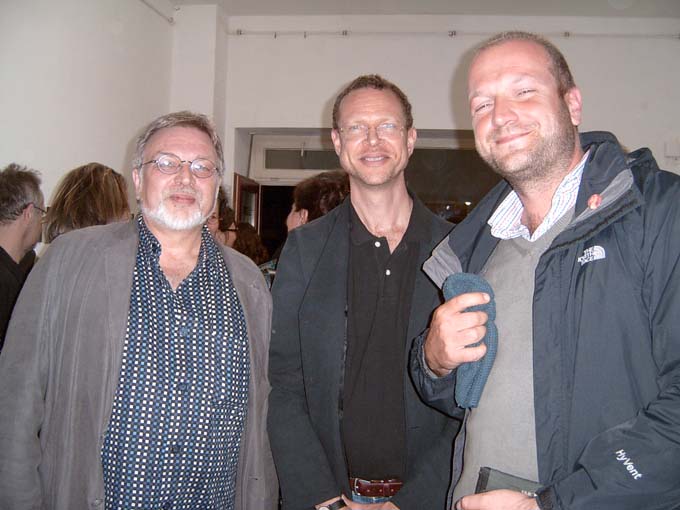 |
|
|
Rainer Jakob, Howard W. French and Jan Kaltofen
|
|
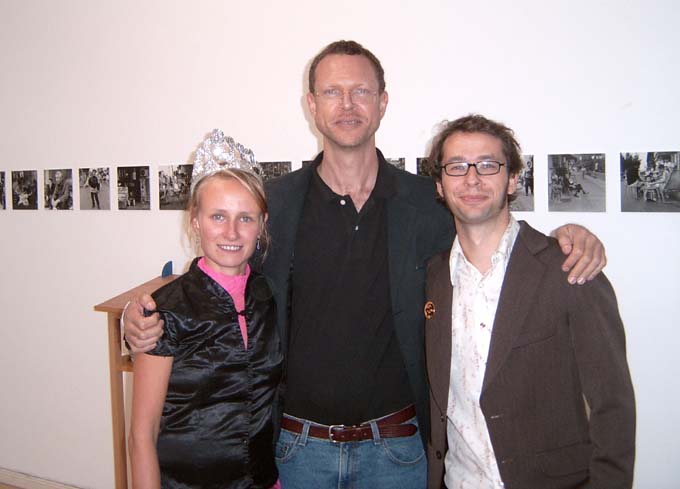 |
|
|
Anna Krenz, Howard W. French and Jacek Slaski
|
|
| home | top of the page |